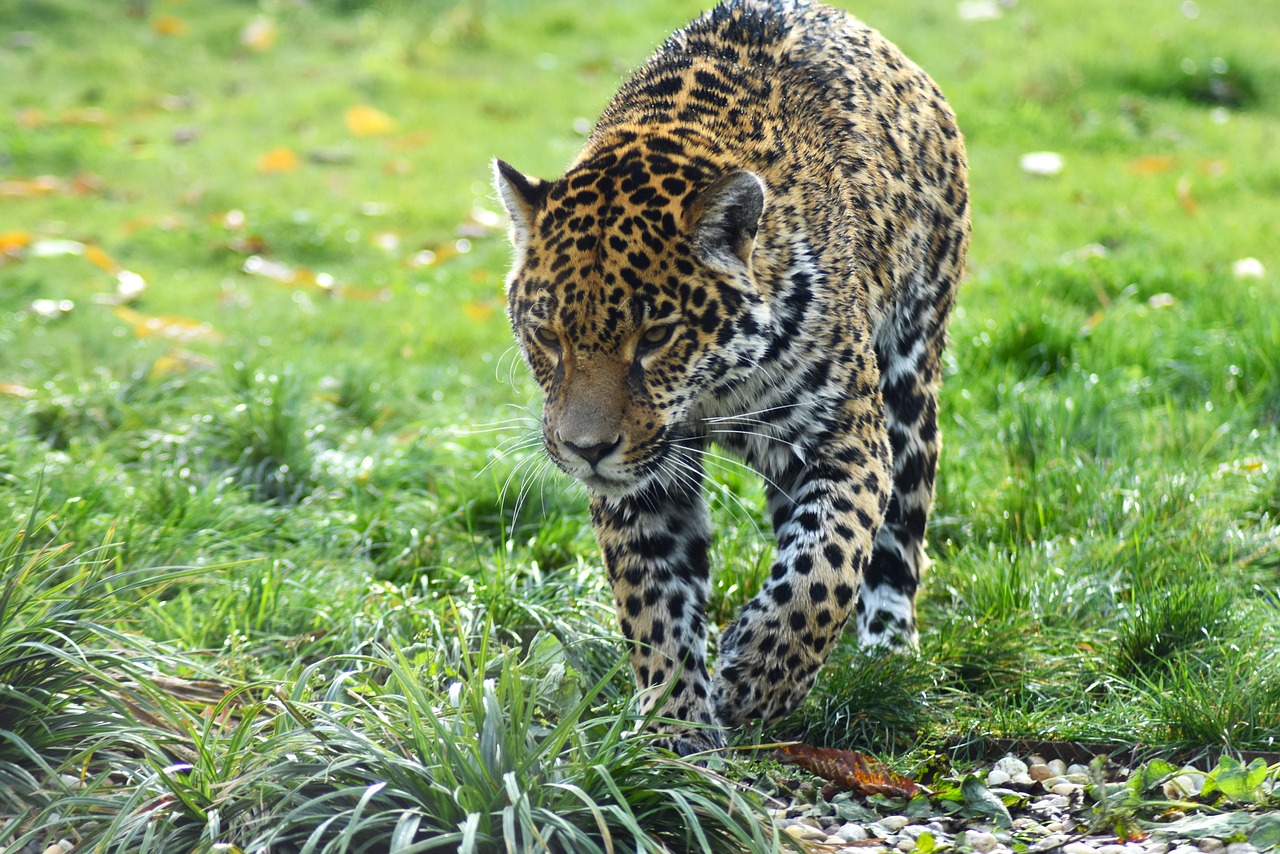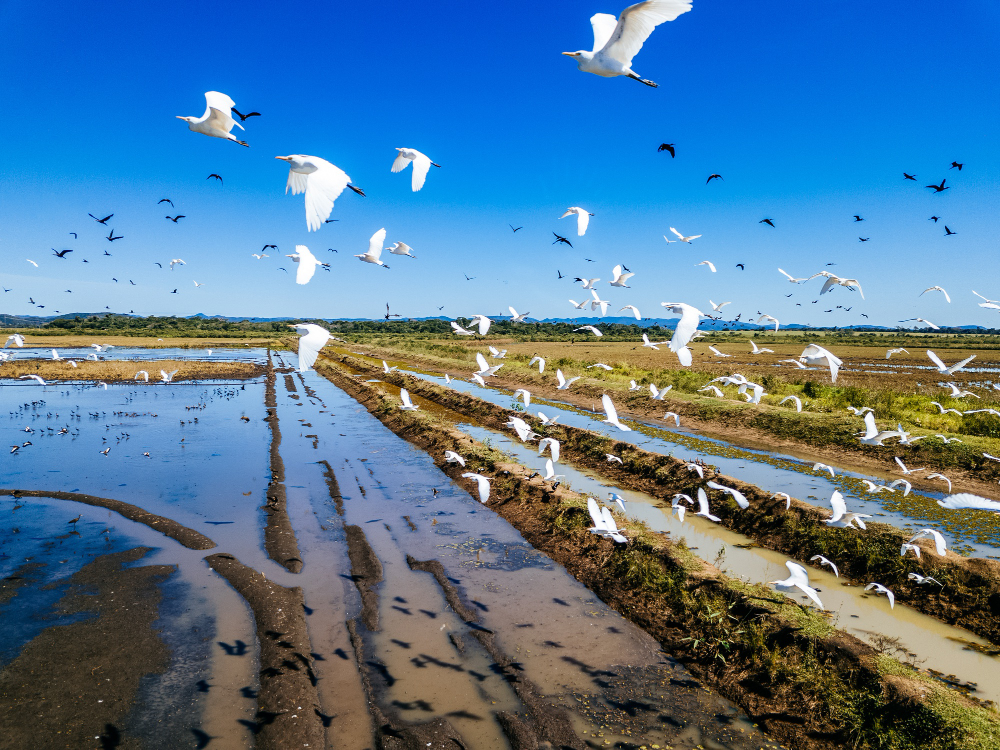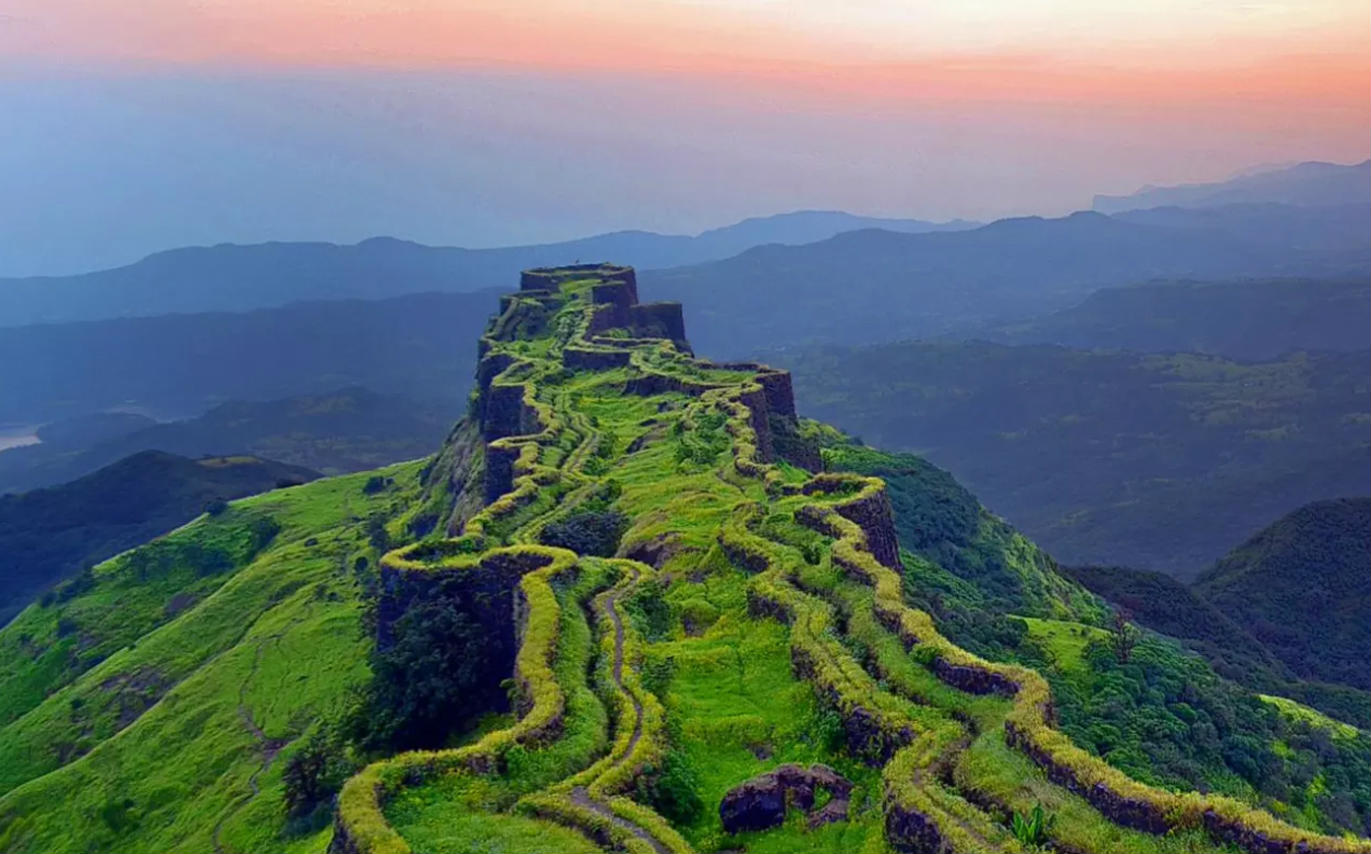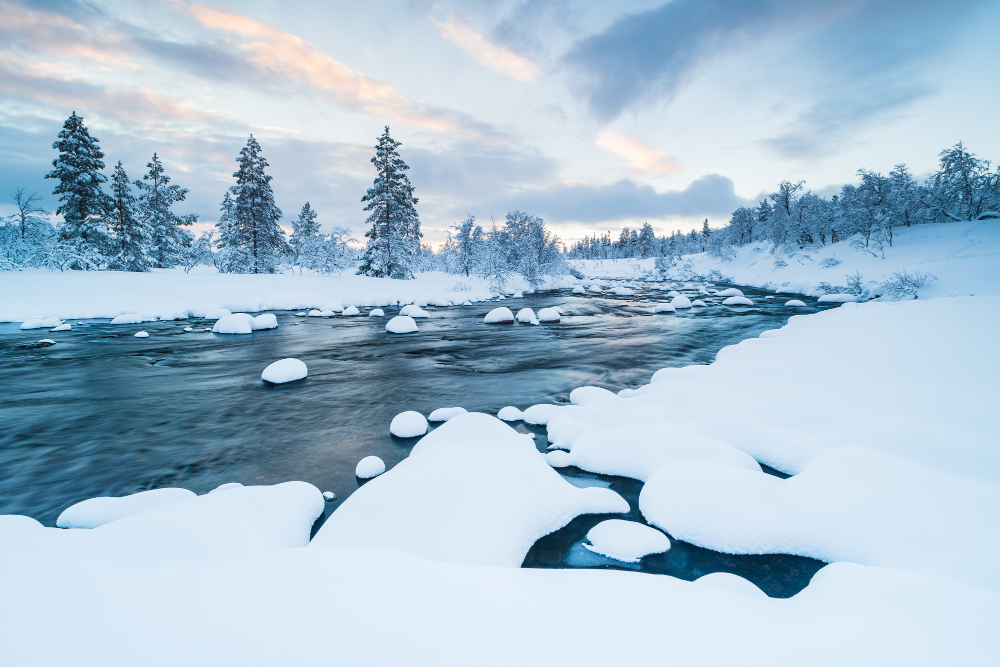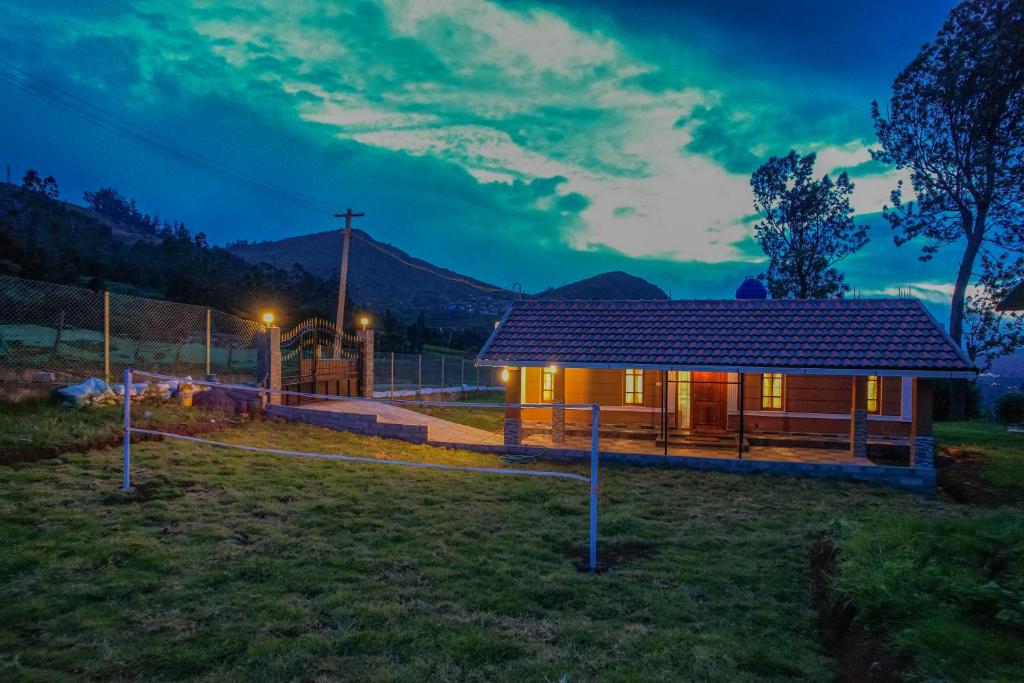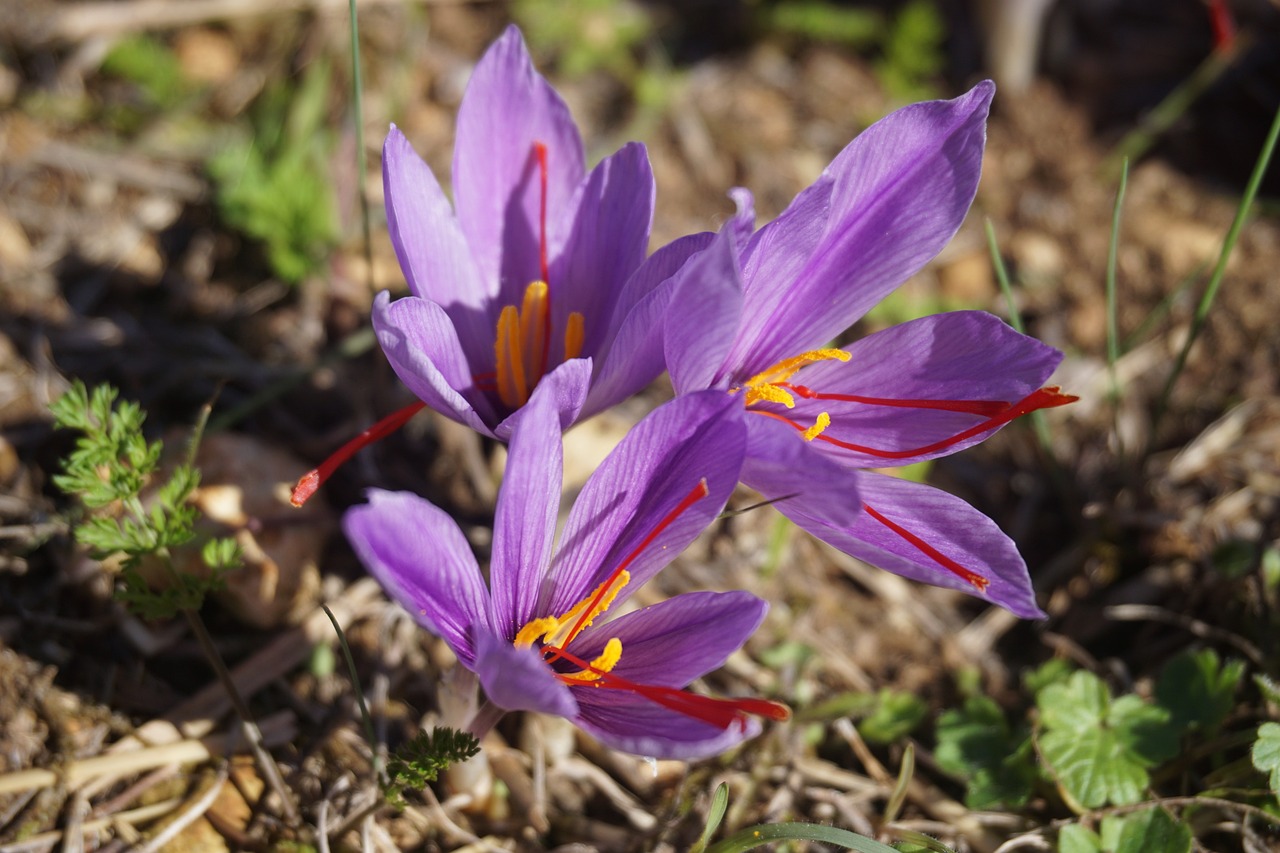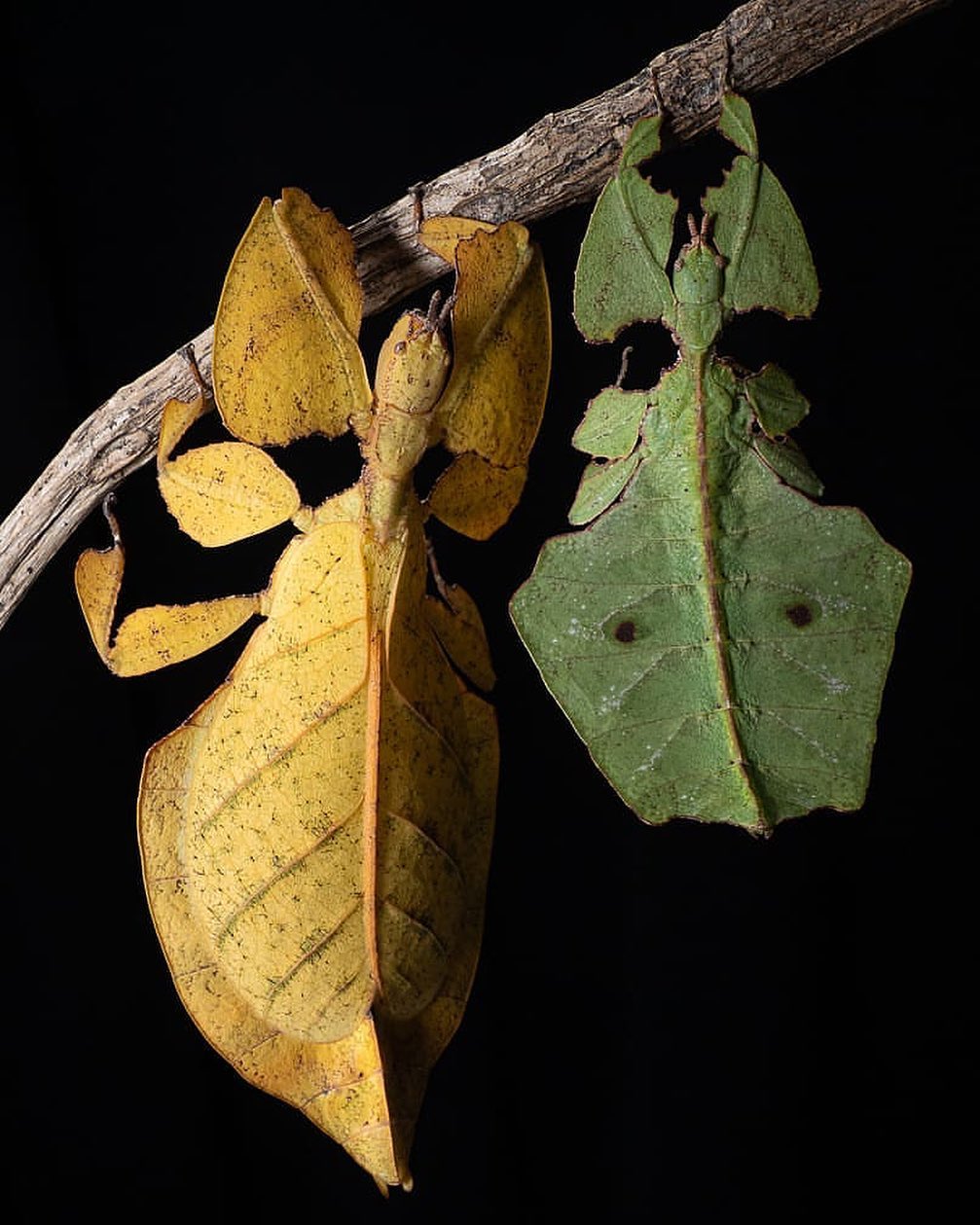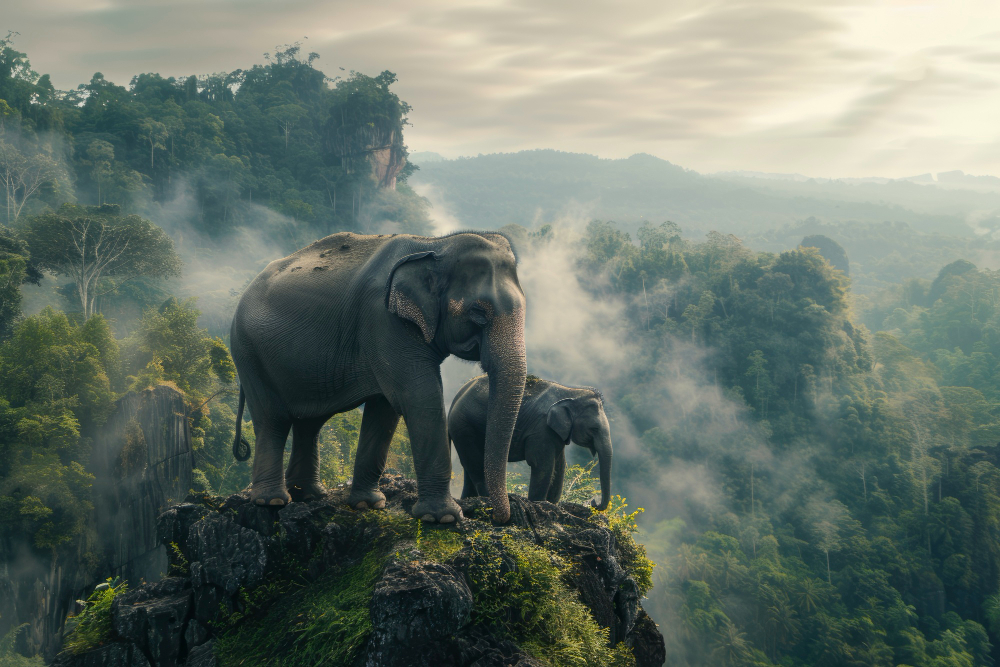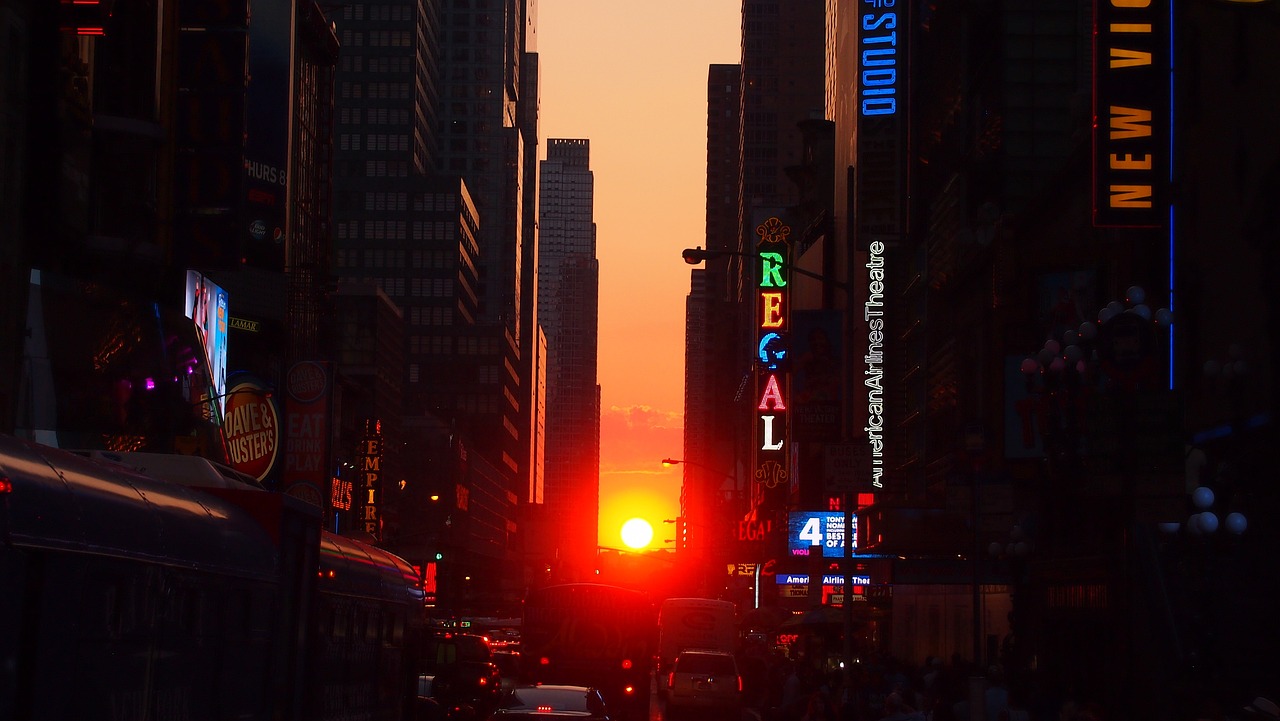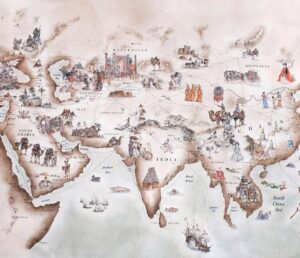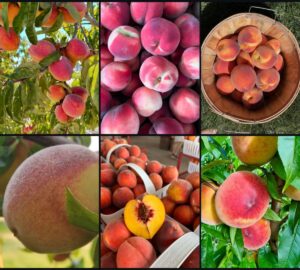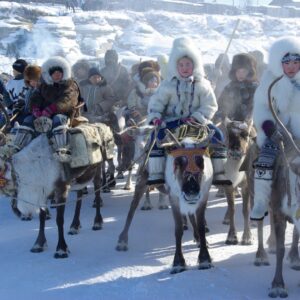Deserts, far from being mere barren wastelands, are among the Earth’s most captivating landscapes. They are realms of contrasts—where life defies extremes and where silence speaks louder than words. These vast expanses of sand, rock, and arid plains are not lifeless voids but vibrant theaters of resilience, beauty, and adaptation. Spanning nearly one-third of the planet’s land surface, deserts are timeless testaments to nature’s ingenuity, each telling its own story of survival against overwhelming odds.
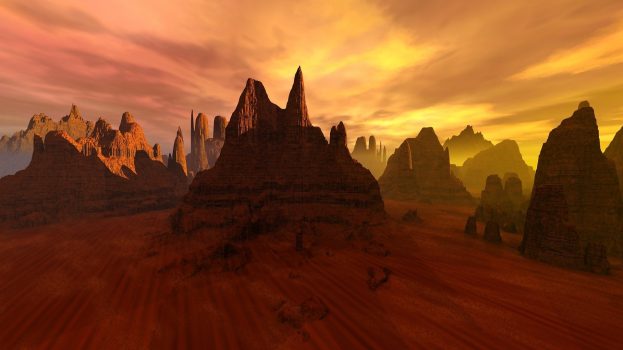 Pin
Pin Image by Roger Sexton from Pixabay
Beneath their seemingly inhospitable exteriors lie ecosystems teeming with life, from the smallest of nocturnal creatures to ancient flora that have thrived for millennia. These lands, shaped by wind and time, hold mysteries as old as the Earth itself. Fossils, forgotten cities, and shifting dunes whisper tales of eras gone by, while their stark beauty invites introspection and awe. Deserts challenge the human spirit and nurture it, offering a profound reminder of our planet’s ability to endure, adapt, and inspire.
Table of Contents
1. Antarctic Desert – A Frozen Vastness
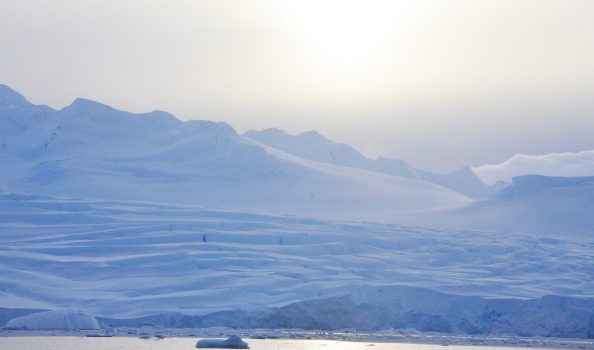 Pin
Pin Image by michelle2214 from Pixabay
The Antarctic Desert is the epitome of Earth’s extremes. Stretching across a staggering 14 million square kilometers, it dominates the southernmost part of the globe, shrouded in an icy veil that remains largely untouched by humanity. While most people picture scorching heat when they think of deserts, Antarctica flips this notion on its head. Its claim to desert status lies in its scarcity of precipitation—less than 200 mm annually—rendering it drier than many of its sandy counterparts.
This land of extremes is a paradox: it is both lifeless and teeming with life. Beneath the icy expanse, microorganisms thrive, adapting to the hostile environment in ways scientists are only beginning to understand. Above, the iconic emperor penguins waddle along the icy plains, braving sub-zero temperatures with a resilience that seems almost mythical. Seals bask on ice floes, and in rare, fleeting moments, the aurora australis—the Southern Lights—paints the sky with hues of green and purple, a vivid reminder of nature’s capacity for beauty even in desolation.
Standing in the Antarctic Desert, one is struck by an overwhelming sense of insignificance. The vast, white expanse stretches endlessly, broken only by jagged peaks of ice and the occasional sound of cracking glaciers. It is a landscape that commands respect and awe. The biting winds that whip across the plains are unforgiving, yet they also carry a strange serenity, a silence that speaks volumes.
Antarctica is more than just a desert; it is a time capsule, holding within its icy layers the secrets of Earth’s climatic past. Yet, as temperatures rise globally, this frozen kingdom faces an uncertain future. The melting ice threatens to disrupt ecosystems and global sea levels, making Antarctica a poignant reminder of the fragility of our planet.
2. Arctic Desert – The Icy Wilderness
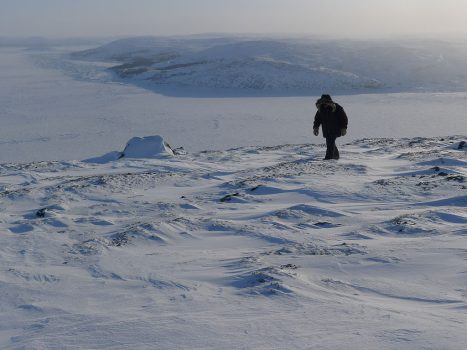 Pin
Pin Image by Velatrix via Wikimedia Commons
At the top of the world lies the Arctic Desert, a sprawling 13.7 million square kilometers of ice and snow that crowns the Earth like a frosted jewel. Encompassing parts of Canada, Russia, Greenland, and Norway, this vast expanse is a place of stark beauty and harsh realities. Unlike its Antarctic cousin, the Arctic Desert is not a continent but a frozen ocean surrounded by treacherous tundra.
The Arctic’s defining characteristic is its unyielding cold, with temperatures often plummeting below -40°C in winter. This icy wilderness is a paradox: barren yet alive. Polar bears roam its icy terrain, embodying the spirit of survival in one of the harshest environments on Earth. Their prey, seals, dart through freezing waters, while Arctic foxes and hares blend seamlessly into the snowy backdrop. The Inuit people, who have called this region home for centuries, are a testament to human adaptability and ingenuity.
One of the Arctic Desert’s most magical phenomena is the aurora borealis, or Northern Lights. These dazzling displays of green, pink, and violet light dance across the night sky, igniting a profound sense of wonder. The lights are not just a spectacle but a reminder of the interconnectedness of nature, as solar winds interact with Earth’s magnetic field to create this breathtaking display.
However, the Arctic is not immune to change. Rising temperatures have accelerated the melting of sea ice, threatening the delicate balance of its ecosystem. This fragile wilderness stands as both a warning and a call to action, urging humanity to protect what remains of its icy splendor.
3. Sahara Desert – The Timeless Sea of Sand
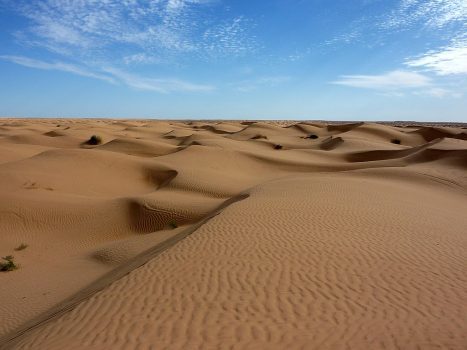 Pin
Pin Image by Wonker via Wikimedia Commons
The Sahara Desert, spanning 9.2 million square kilometers across North Africa, is a land of superlatives. It is the largest hot desert in the world and one of the most iconic landscapes on Earth. With its endless golden dunes, some towering over 180 meters, the Sahara is the quintessential desert, a place that conjures images of camel caravans and scorching sun.
By day, temperatures can soar above 50°C, making it one of the hottest places on the planet. At night, however, the desert transforms as temperatures plummet, and the vast sky reveals a tapestry of stars, unspoiled by light pollution. This dramatic contrast serves as a metaphor for the Sahara itself—a place of extremes and contradictions.
Despite its unforgiving climate, the Sahara is far from lifeless. Nomadic tribes like the Tuareg have navigated its vastness for centuries, their knowledge of the land passed down through generations. The desert is also home to unique wildlife, from the agile fennec fox to the hardy dromedary camel, each perfectly adapted to the harsh environment.
The Sahara’s history is as rich as its sands are vast. Ancient trade routes crisscrossed the desert, connecting civilizations and facilitating the exchange of goods, ideas, and cultures. Hidden beneath its surface are the remnants of a greener past, including fossils and rock art that tell stories of a time when rivers flowed through this now-arid land.
Walking through the Sahara, one cannot help but feel a profound connection to the Earth’s history. The dunes shift and change with the wind, a reminder of the impermanence of all things. Yet, the desert itself remains timeless, a steadfast witness to the passage of millennia. It is a place that humbles and inspires, reminding us of the resilience of life and the enduring power of nature.
4. Arabian Desert – A Jewel of the Middle East
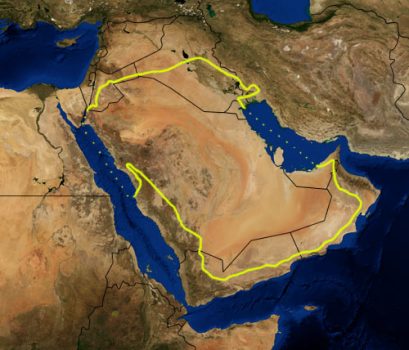 Pin
Pin Image by Pfly via Wikimedia Commons
The Arabian Desert stretches across 2.3 million square kilometers, draping the Arabian Peninsula in a captivating mix of golden dunes, rugged plateaus, and salt flats. This land of contrasts blends stark desolation with hidden beauty, creating a desert that is as mysterious as it is majestic.
Beyond its physical allure, the Arabian Desert holds the echoes of ancient civilizations. Buried beneath its sands lies the fabled city of Ubar, a symbol of human ambition and resilience. For centuries, Bedouin tribes have navigated its arid expanses, their lives shaped by the desert’s unforgiving yet awe-inspiring nature.
As the sun sets, the desert transforms into a celestial haven. The vast sky, free from urban lights, becomes a canvas of stars, a reminder of the infinite universe. The Arabian Desert invites introspection, its silence broken only by the soft whispers of shifting sands. It is not just a place but an experience, a testament to the enduring relationship between humanity and nature.
5. Gobi Desert – Asia’s Harsh Marvel
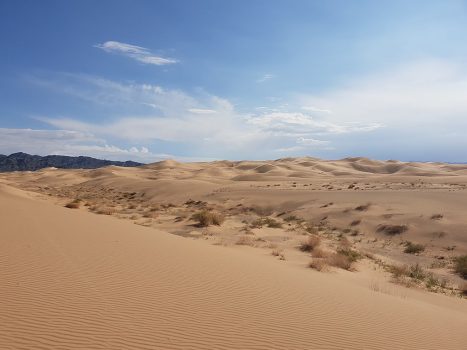 Pin
Pin Image by Richard Mortel via Wikimedia Commons
The Gobi Desert spans 1.3 million square kilometers across China and Mongolia, offering a dramatic departure from the stereotypical image of sandy deserts. Instead, its rocky terrain and sparse vegetation create a landscape that is as formidable as it is fascinating.
The Gobi is a land of extremes. Temperatures plummet to a bone-chilling -40°C in winter and soar to sweltering highs in summer. Yet, life persists. Nomadic herders call this region home, their centuries-old traditions woven into the fabric of the desert.
Steeped in history, the Gobi Desert is a living museum. It cradles remnants of the ancient Silk Road, a conduit of trade and culture that shaped the world. Fossil-rich deposits reveal the presence of dinosaurs, linking the present to a prehistoric past. Its raw beauty, defined by its unyielding terrain and dramatic skies, inspires a sense of endurance and discovery that lingers long after the journey ends.
6. Kalahari Desert – The Red Sands of Africa
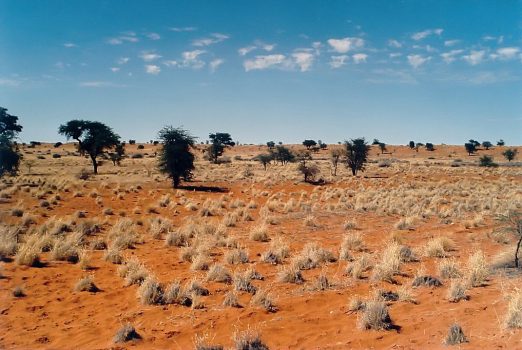 Pin
Pin Image by Elmar Thiel via Wikimedia Commons
With its distinctive red sands and semi-arid expanses, the Kalahari Desert covers 930,000 square kilometers across Southern Africa. Unlike many deserts, the Kalahari teems with life, a paradox that makes it truly unique.
This desert is a sanctuary for wildlife, hosting creatures like meerkats, lions, and the striking gemsbok. Its hardy flora, including the resilient acacia tree, provides a lifeline to the animals and people who inhabit the region. The indigenous San people, also known as the Bushmen, have lived here for millennia, their traditions deeply intertwined with the rhythms of the land.
To the San, the Kalahari is more than a habitat; it is a spiritual space. Their stories, passed down through generations, infuse the desert with a sense of sacredness. The Kalahari’s vastness, punctuated by crimson sunsets and starlit nights, evokes both awe and a profound respect for the interconnectedness of all life.
7. Patagonian Desert – South America’s Hidden Gem
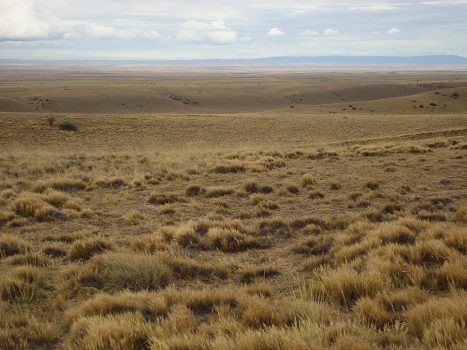 Pin
Pin Image by Jason Hollinger via Wikimedia Commons
The Patagonian Desert, or Patagonian Steppe, spans 670,000 square kilometers across Argentina and Chile. This cold desert, nestled between the Andes Mountains and the Atlantic Ocean, offers a landscape unlike any other.
Windswept plains stretch endlessly, their rocky soil hinting at the desert’s harshness. Yet, there is a quiet allure in its starkness. The Patagonian Desert’s isolation creates an almost otherworldly atmosphere, a reminder of the Earth’s unyielding power and beauty.
Its sunsets are a masterpiece, painting the sky in hues of orange and purple that fade into the cool, crisp night. Here, one feels removed from the chaos of modern life, enveloped by the serenity of untouched nature. The Patagonian Desert is more than a geographic location; it is a retreat for the soul, a place where simplicity and beauty converge to leave a lasting impression.
8. Great Victoria Desert – Australia’s Untamed Frontier
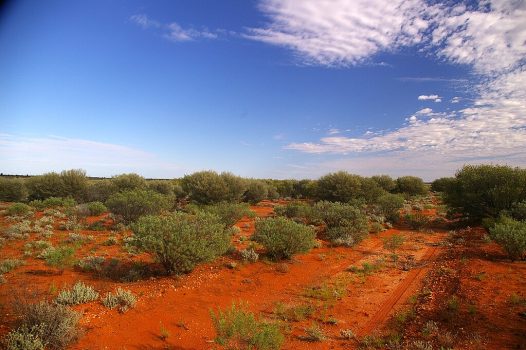 Pin
Pin Image by Wayne England via Wikimedia Commons
The Great Victoria Desert, spanning 647,000 square kilometers, is Australia’s largest desert and a realm of striking contrasts. This vast expanse, with its fiery red sands, shimmering salt lakes, and scattered vegetation, feels almost otherworldly—a reminder of nature’s raw, untamed beauty.
Unlike many deserts, the Great Victoria thrives with subtle life. Its flora includes spinifex grass and hardy shrubs, while fauna like dingoes, monitor lizards, and kangaroos have adapted to its harsh conditions. This desert is not only a natural wonder but also a cultural treasure. For thousands of years, Aboriginal communities have called this region home, their deep knowledge of the land allowing them to flourish where others might falter.
The Great Victoria Desert embodies the resilience of both humans and nature. It is a living testament to the harmony that can exist between people and their environment, even in the face of relentless challenges. At night, its vast skies glitter with countless stars, offering a sense of timeless connection to the universe.
9. Syrian Desert – The Crossroads of History
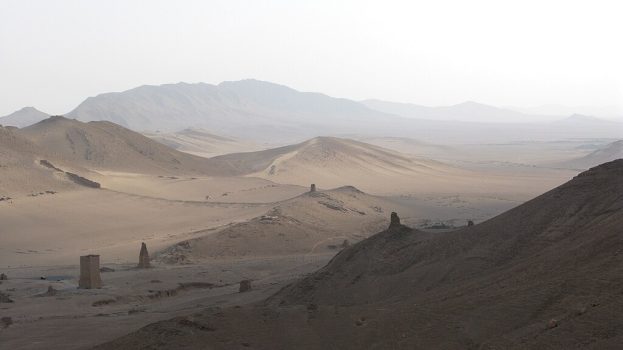 Pin
Pin Image by Vyacheslav Argenberg via Wikimedia Commons
The Syrian Desert, stretching across 520,000 square kilometers of the Middle East, is a landscape of arid steppes and golden sand dunes. This seemingly desolate region holds an unparalleled richness in history, having served as the stage for the rise and fall of countless civilizations.
From the ruins of Palmyra in Syria to ancient trade routes that once bustled with caravans, the Syrian Desert is steeped in stories of human ambition and ingenuity. It is a place where past and present merge, offering a sense of awe to those who walk its sun-baked paths. Despite its unforgiving climate, the desert has been a cradle of creativity and survival, hosting settlements that turned scarcity into opportunity.
Today, the Syrian Desert continues to inspire with its rugged beauty and historical depth. Its silent sands seem to echo with the voices of the past, a poignant reminder of humanity’s enduring spirit and its capacity to thrive even in the harshest conditions.
10. Great Basin Desert – The High Desert of North America
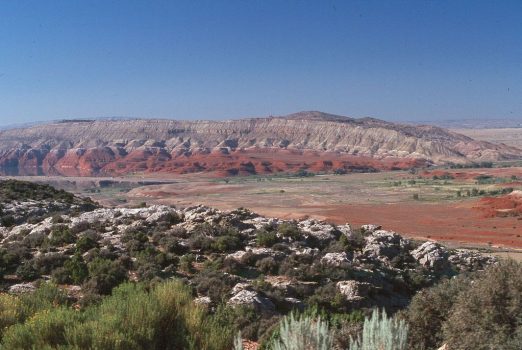 Pin
Pin Image by Earth’s beauty internet site via Wikimedia Commons
The Great Basin Desert, covering approximately 492,000 square kilometers in the United States, stands apart as a cold desert. Its sagebrush-covered plains, rugged mountain ranges, and snow-dusted winters paint a picture of serene isolation, a landscape both stark and inviting.
This high-altitude desert is home to unique flora and fauna, including the ancient bristlecone pines, some of the oldest living organisms on Earth. The Great Basin Desert’s beauty lies in its quiet endurance—a reminder of the patience and fortitude required to survive in such a challenging environment.
Walking through this desert is a meditative experience. The air, crisp and dry, carries a sense of stillness that invites introspection. Each rugged peak and endless plain tells a story of time’s passage, a whisper of resilience that has shaped the land for millennia.
The Emotional and Ecological Impact of Deserts
Deserts are not just landscapes; they are narratives of survival and adaptation. These extreme environments teach us to embrace contrasts—scorching days and freezing nights, barrenness and hidden life. They challenge the human spirit while offering solace in their vast, unspoiled beauty.
However, deserts are under threat. Climate change accelerates desertification, while human activities disrupt delicate ecosystems. Protecting these regions is vital, not only for their biodiversity but also for the cultural and spiritual significance they hold.
Deserts inspire humility and awe. They remind us of the fragility of life and the strength required to endure. Their vast emptiness, paradoxically, is full of lessons about resilience and balance.
